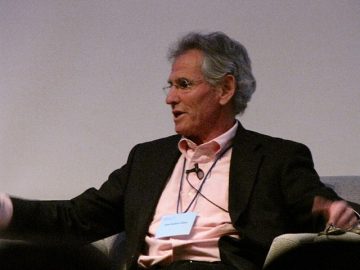How mindfulness can transform intercultural training
Jul 2, 2018 · by Elaine Teo

For intercultural trainers: a powerful solution to the biggest problem
Ask a global mobility professional what the most enduring problem is with cultural training, and the answer will probably be the “transfer into real workplace situations”.
Getting return on investment in training, by ensuring that people really use their learning in their work to deliver improved outcomes, is not easy.
It’s a challenge with most kinds of training, but especially with intercultural training because of the nature of “culture” itself.
Why the culture challenge resists simplistic solutions
Culture is present in many layers of our cherished identities, right down to our unconscious habits. This makes cultural differences a complex and multidimensional problem for our clients to successfully solve, in both workplace and social situations.
Here are three examples:
- Intercultural “friction points” can arise at different points of the day. This is especially marked in expatriation. It is said that there is no such thing as “stress-free expatriation”. Clients need to interact constantly with a culture not one’s own both professionally and personally. The unpredictability, relentlessness and range of these “friction points” can wear down the most resilient and open-minded people.
- Culture operates at subconscious levels. As our clients encounter something that makes them feel uneasy, offended, or even violated, they may be unable to articulate why it makes them feel that way, because some cultural habits may have been ingrained so deeply that they defy rational explanation. This “below the iceberg” element of culture makes it tricky to apply effective interventions to, because most interventions stay at the level of ideas and the intellect and don’t reach down far enough.
- Applying new learning is cognitively demanding, especially in complex situations. Our clients often need to apply their intercultural knowledge and skills in high-pressure situations that lack clarity. In these circumstances, making the extra effort to apply what they had learned on a course months or years ago is an unwelcome additional cognitive load when the going is tough, and clients are often demotivated or lack energy to do so. Many people end up defaulting back to conditioned responses and actions that feel comfortingly “instinctive” and “familiar”.
How can we deliver our training in a way that makes it easier for our clients to apply what we teach them, when they most need it, but when it is most difficult to do?
Mindfulness can help learning embed better
Mindfulness practice offers trainers a powerful way to help our clients break out of this unhealthy cycle, and embark on a new positive one that is sustainable.
This is something new in intercultural training because, unlike the cultural interventions and frameworks that form the backbone of many trainings, mindfulness works on the level of practice, not ideas.
There are many definitions of mindfulness. For the purpose of this article, we propose defining mindfulness as
the practice of calming and stilling the mind, training one’s awareness to be fully present in the moment, so that one is sharper, clearer, more focused, more stable, and less prone to the pushes and pulls of one’s thoughts, emotions and drives.
This “mind practice” functions as a truly universal tool to underpin and supercharge whichever intercultural frameworks trainers use in their interventions.
Mindfulness prepares the ground for cultural training to “stick” in two important ways:
- Bypassing thought and emotional resistances which stop cultural training from working
- Increasing awareness of the inherent pleasure and motivation for clients that comes from engaging with cultures in a way that promotes beneficial self-growth.
Done well, mindfulness could be the longed-for magic ingredient to make the training embed and flow into the day-to-day of our clients’ lives.
Ideas alone are not enough
Mind, body, breath – we all use these in every moment of our lives. What makes mindfulness such a helpful tool particularly in intercultural settings is that it is based on these three simple elements common to every human being alive.
Mindfulness is therefore one of the few truly “one size fits all” tools that applies to any culture. It can be used as a powerful unifying force to remind our learners that beneath their disparate cultures, we all possess a universally similar awareness, that is embodied in human form and constantly breathing in and out.

While we are all thinking, breathing bodies, intercultural trainers have traditionally targeted only the mind, specifically the sub-section of the mind that is the intellect, in training. This means that more than two-thirds of the fundamental ways in which we exist – non-thinking awareness, body, and breath – are untapped by intercultural trainers.
This gaping hole is particularly obvious when considering that the experience of other cultures is often physical. New cultures, encountered through meeting people or visiting a place, can be jarring physical experiences. Sounds, sights, smells and tastes, personal distances between individuals, and greeting rituals are just some of many ways in which intercultural experiences can be tangibly “alien” from one’s home customs.
When encountering something new, a person’s response can be instantaneous and physical. It is common for people to “brace themselves” against this unfamiliarity by tensing up and getting defensive.
Equally, one’s shifting inner landscape of thoughts and emotions has profound effects on mind, body, and breath. There may be ideas, values and traditions upheld by another culture that one finds hard to reconcile with one’s own. The resulting stress can manifest itself in inner turmoil or resistant body language. One might find it hard to breathe deeply and relax in the face of such unusual or even repulsive ideas.
The limitations of “idea-only” training interventions
When dealing with such physical responses to new and stressful stimuli, it is often inadequate to approach the individual with “idea-only” interventions. Think of the last time you were terrified of something. Perhaps an animal like a snake, spider, lizard, or cockroach; or you are afraid of heights and someone is trying to convince you to go on a rollercoaster ride, go rock-climbing, or jump off a bungee.

How many times have you managed to overcome that fear through “reasoning” only? Perhaps your friend who is not afraid of snakes, spiders, rollercoasters or bungee-jumping is trying to give you all the “rational” reasons why you “should” not be afraid. How does that make you feel? Does it succeed in removing the fear, or is it often ineffectual?
The same thing happens with other strong reactions, such as aversion and repulsion. Given how different cultures can be across so many dimensions of our daily lives, it is virtually a given that at some point we will come across an aspect of a new culture that we really don’t like.
Cultural awareness and mindfulness
It takes mindful practice to grow our awareness of the ways in which we quickly and enduringly attach these emotions to these cultural aspects that we find hard to accept.
Our reactions of dislike or even disgust are often instant and can last a long time. These are intense emotions that colour our subsequent perceptions and interpretations, and can be very hard to shake off. It takes mindful practice to grow our awareness of the ways in which we quickly and enduringly attach these emotions to these cultural aspects that we find hard to accept.
The problem is that these strong reactions – even those with positive affect, such as infatuation or passionate attraction – obscure our clients’ ability to perceive the full reality of their intercultural situation in a clear, calm, and objective manner. They may believe themselves to be operating reasonably and rationally, when they may actually be blind to their own emotional attachments to their own perspective.
This hampers their ability to be flexible and effective in navigating their intercultural situation, because they don’t know how to let go of their cultural bias and adopt better new mindsets and behaviours. That is, if they are even sufficiently aware of this happening within themselves in the first place.
Dissolve mental obstacles through working with body and breath awareness
Stressed body = stressed mind
The brain is exquisitely tuned to muscle tone; tense muscles produce tense thoughts. Let’s try a little experiment to demonstrate this.
Mindfulness exercise 1: spill-over effects
What are you learning from this simple exercise about the intimate link between mind, body and breath? Can you see how interconnected they are? And how what’s happening in one dimension has a “spill-over” effect on the other two?
This is a crucial point for us intercultural trainers. It means we can use the entry points of breath and body to bring about change in the mind.
Resting the mind through calming the body and breath
Now, let’s try the opposite. Let’s focus our awareness on relaxing our breath and body, and see what happens to your mind.
Mindfulness exercise 2: mindful breathing
What do you notice? Is it easier now than before? What is different this time round?
Can you feel the peace and clarity emerging, as your nervous reactivity and “hot” emotions, like stress, anger, irritation, and anxiety, get increasingly quietened down? What have you learnt from this simple relaxation exercise of mindful breathing, about the connection of breath, body and mind and how to use the calming of breath and body to also calm the mind?
How does mindfulness work?

Mindfulness practices, such as those popularised by the “father of modern mindfulness” Jon Kabat-Zinn, or deeper-rooted disciplines such as the various forms of meditation, use our awareness of our body and breath to help us escape the tyrannies of our overactive mind.
In our busy modern lives, we are so used to thinking that we easily fall into the trap of thinking that our minds are nothing but thought. This is because for most of us there is a ceaseless chatter going on in our minds. We mistakenly believe that if we were to stop thinking, there would be “nothing” there.
This is simply not true.
When we learn to pay close attention to what is going on in our own minds, we will realise that there are all kinds of things going on in there, including thoughts. For one, our five sensory organs are constantly providing us with a rich variety of sensations moment by moment, which our brain expertly weaves into a sensation of continuity.
Our “inner cinema”
We can liken this to watching a movie. A movie is only a series of stills projected extremely quickly one after the other, but our visual system cannot perceive the individual stills that quickly, and the result is that we feel like we are watching a smooth continuous flowing “reality”.
There is one additional dimension of sensation on top of our five physical senses, and that is the mental dimension. Within this “sixth sense”, there are all kinds of similarly temporary and short-lived phenomena. Thoughts are a perfect example of this. We have many other kinds of mental phenomena, including emotions, impulses, and moods.
Mindfulness exercise 3: our inner cinema
The “blank canvas” on which all these various mental phenomena are coming and going is your base awareness. Connecting back to this awareness and resting in it, non-thinking and non-doing, is a central part of mindfulness training.
With practice, one can loosen one’s attachments to one’s own thoughts, emotions, preconceptions and ideas, by returning again and again to one’s underlying awareness, and realising how temporary and “constructed” these seemingly-solid mental concepts are.
The power of using mindfulness to enhance intercultural training
Mindfulness practice is therefore a universal tool that is simple, secular, and only requires that the person has “body, breath and mind” and the ability to pay attention to these three basic elements. From these deceptively simple foundations, a raft of profound benefits to the individual can start to be unlocked.
If we were to pick just one – loosening one’s attachments to one’s own ideas, as described above – we can start to see how powerful it is in enhancing intercultural training.
Overcoming obstacles faced by intercultural trainers
Challenge: clients’ old habits die hard
Mindful solution: access the natural stillness, stability and clarity of body and breath to make better decisions
One of the most stubborn obstacles intercultural trainers face in bringing our clients to open themselves up to a wider scope of cultural ideas and behaviours is the simple fact that everybody is naturally attached to their own perspectives and ways of doing things. “Old habits die hard”, “You can’t teach an old dog new tricks” and other similar sayings testify to the persistent difficulty of even the most noble-minded individuals in overcoming this deep attachment to “the way we are”.
Think about the multitude of problems this “attachment to self” causes in a typical intercultural context. At the start of this article, we examined some of these reasons why the biggest problem intercultural trainers face is getting their clients to transfer the learning into work situations. These included the multitude and variety of ways in which cultures differ from one another, in professional and social contexts, across all six senses (i.e. the five physical senses and the sixth “inner” sense of the mind, which includes things like ideas and values).
We looked at how encountering a new culture can produce strong reactions of like and dislike, and how these reactions can skew a client’s ability to perceive things clearly and objectively, and therefore make sound decisions based on these clear, objective perceptions and a balanced frame of mind.
Mindfulness in your intercultural training practice
We can insert simple mindfulness practices such as meditation and yoga within an intercultural training to get our clients to:
- open their minds and hearts
- let go of their resistances
- be fully perceptive to the nuances of other cultures
- practise new behaviours that allow them to navigate these other cultures more successfully.
Therefore, a tool that can come in to address this problem at its root, which is our clients’ inability to shake free of their own perspective and to embrace other ways of looking at things and behaving, is of critical importance.
The reason for this is obvious. By allowing our clients to start realising just how trapped they had been in their own thoughts and emotions, and showing them how to apply awareness of their breath and body to calm the conceptual turbulence of the mind, mindfulness delivers a universal and effective solution for our clients to this exact problem.
It allows the mind to settle into its natural stillness, stability and clarity. From this position, assessing situations and making decisions is significantly improved, without the corrosive influence exerted on their awareness by the push and pull of their thoughts and emotions.
With consistent practice, further benefits are unlocked for our clients as their minds, breaths and bodies get increasingly aligned, allowing them to practice new behaviours more easily and successfully, and increasing their mental and emotional agility and resilience. The positive effects of this will spill over beyond our clients’ intercultural interactions into other key aspects of their lives such as leadership, parenting, or cultivating friendships.
